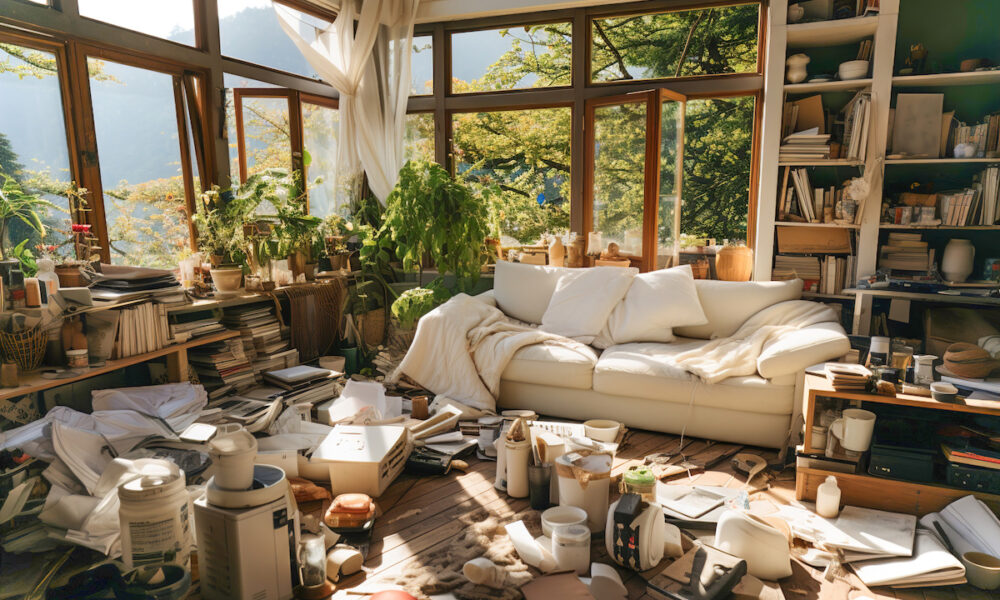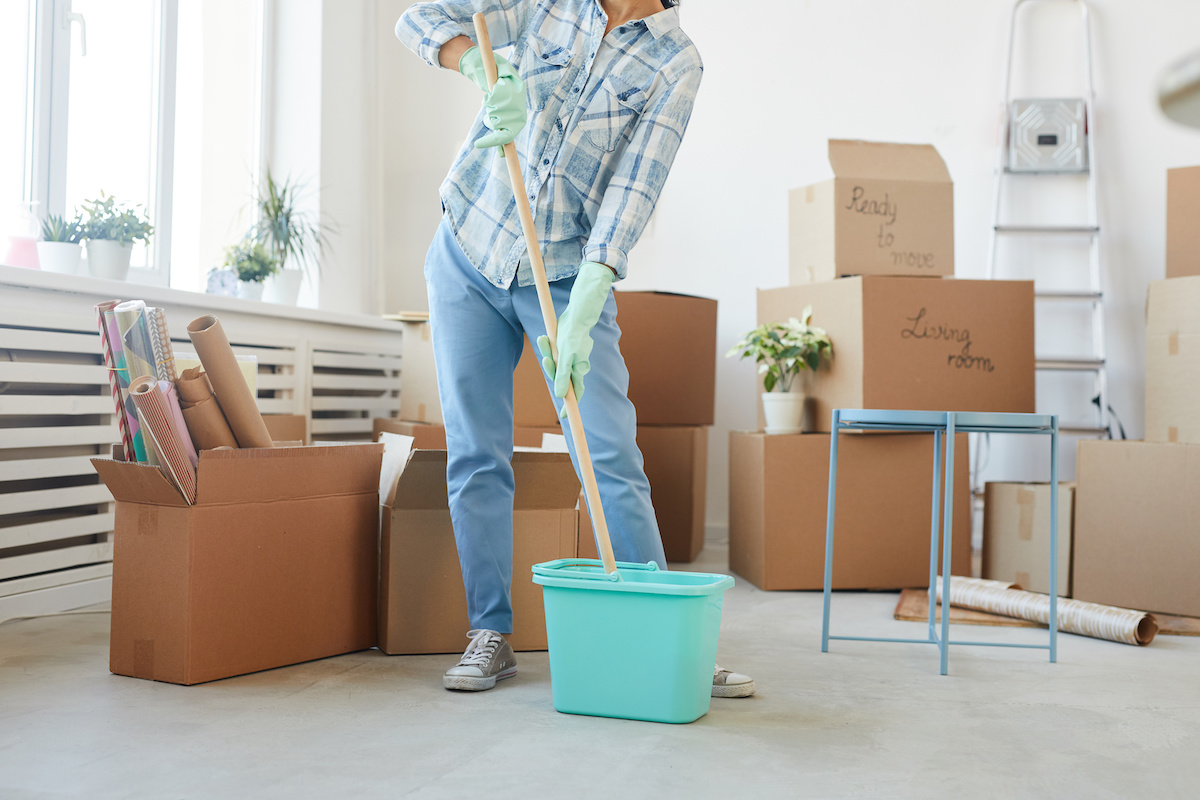
Did you know that one of the most popular resolutions for the new year is to get more organized? But when it comes to a hoarding situation, this isn’t always so easy. There are special hoarder cleaning techniques to consider when it comes to organization. Many times, before an organization can even begin, a lot of cleaning must be done first. But what do you do first in when cleaning a hoarded home, anyway? How do you prioritize?
If you are dealing with a hoarding situation, know that you aren’t alone. But the good news is that there are ways to prioritize when cleaning a hoarded home.
Cleaning a Hoarded Home? Show Compassion
Are you helping a hoarder clean? Before diving into the cleaning process, it’s very important to understand the emotional attachment the hoarder may have to their possessions. Showing compassion and patience is essential.
Often, professional help from therapists or psychologists is beneficial in addressing the underlying emotional issues.
First Steps: Prioritizing Health and Safety
Creating a healthy and safe living environment is crucial, especially in homes affected by hoarding. Hoarding disorder leads to excessive accumulation of items, creating living spaces that are often unsafe and unhealthy. Addressing this issue goes beyond mere cleaning; it involves transforming the home into a space conducive to mental and physical well-being. Here’s a guide to achieving a healthy living environment in a hoarder’s home.
- Identifying Hazards: Look for mold, structural damage, or pest infestations.
- Ensuring Good Ventilation: Clearing spaces to improve air flow, reducing the risk of respiratory problems.
- Removing Health Hazards: Discarding items that are unsanitary or contribute to unhealthy conditions.
Make and Stick to a Structured Plan
When it comes to hoarder cleaning techniques for a healthy living environment, it pays to have a plan. Make a plan with the following steps:
- Assessment: Evaluate the extent of clutter and its impact on living conditions.
- Setting Realistic Goals: Work with the individual to set achievable cleaning and organizing goals.
- Phased Approach: Tackle the cleaning process in phases to make it more manageable. This can reduce the overload and allow you to make more progress, even if it goes slower. Slow progress is better than no progress!

The Road to a Clean and Organized Home
Some people use cleaning and organizing interchangeably. However, the truth is that they are two different tasks.
For example, cleaning is the act of removing dirt, dust, clutter, and grime from surfaces and spaces. It’s about maintaining hygiene through activities like dusting, vacuuming, wiping, and sanitizing.
Meanwhile,, organizing is the process of arranging and categorizing items to create an orderly and efficient environment. It involves decluttering, sorting belongings, and finding appropriate places for items to enhance accessibility and aesthetic appeal.
While cleaning ensures that your space is hygienic and presentable, organizing optimizes the space for functionality and ease of use. Both are essential for creating a comfortable and pleasant living or working environment, but they address different aspects of space maintenance.
To get a clean and organized home after a hoarding situation, you’ll need help with:
- Systematic Cleaning: Clean each space thoroughly after decluttering.
- Organizational Systems: Implement simple organizational systems to maintain order.
Encouraging Healthy Habits
Hoarding can lead to chaotic and unsafe living conditions. This can lead to chronic bouts of stress, anxiety, and other mental health challenges.
But by maintaining healthy habits, those who suffer from hoarding disorder can gradually regain control over their environment. These habits, such as routine cleaning, mindful decluttering, and organized living can greatly improve mental health. In fact,
They encourage a sense of accomplishment and self-efficacy, reduce the overwhelm caused by clutter, and help break the cycle of compulsive accumulation. Practice healthy habits as a foundation for long-term change, which can also prevent the relapse into hoarding behaviors.
To encourage healthy habits during hoarding cleaning techniques, start with the following:
- Routine Maintenance: Establish regular cleaning routines. This can include easy action items like taking dirty dishes to the sink after every meal, or vacuuming every Wednesday.
- Mindful Accumulation: Impulsive buys can easily turn into a hoarding situation fast. Think about the reason why you plan to buy each item and what you plan to do if you never use it. Give yourself a timeframe to use the item or donate it.
Create a Functional Living Spaces
Everyone deserves a relaxing living room where they feel safe to unwind. But when you’re living in a hoarding home, your space is anything but functional.
The goal is to create a functional living space that supports day-to-day activities:
- Designated Areas: Assign specific areas for different activities, like sleeping, eating, and relaxing.
- Accessibility: Ensure that all areas of the home are easily accessible and safe.
Fostering a Supportive Environment
Although not exactly a cleaning technique, it’s important to provide support in hoarding situations. No one wants to feel all alone in the process of cleaning out a hoarded home.
- Regular Check-Ins: Maintain regular contact to provide emotional support.
- Community Resources: Utilize community resources for additional support and guidance.
Cleaning a Hoarded Home: Prioritize Getting Help
Hoarding is a very tough task to tackle on your own. The fact is that some hoarding situations are hazardous and dangerous to clean on your own. On the other hand, the sheer volume of items may be too much to handle.
When this is the case, please reach out to us at World Class Wildlife. We know exactly what to prioritize when it comes to cleaning a hoarded home. With the tools, skills, and team,
